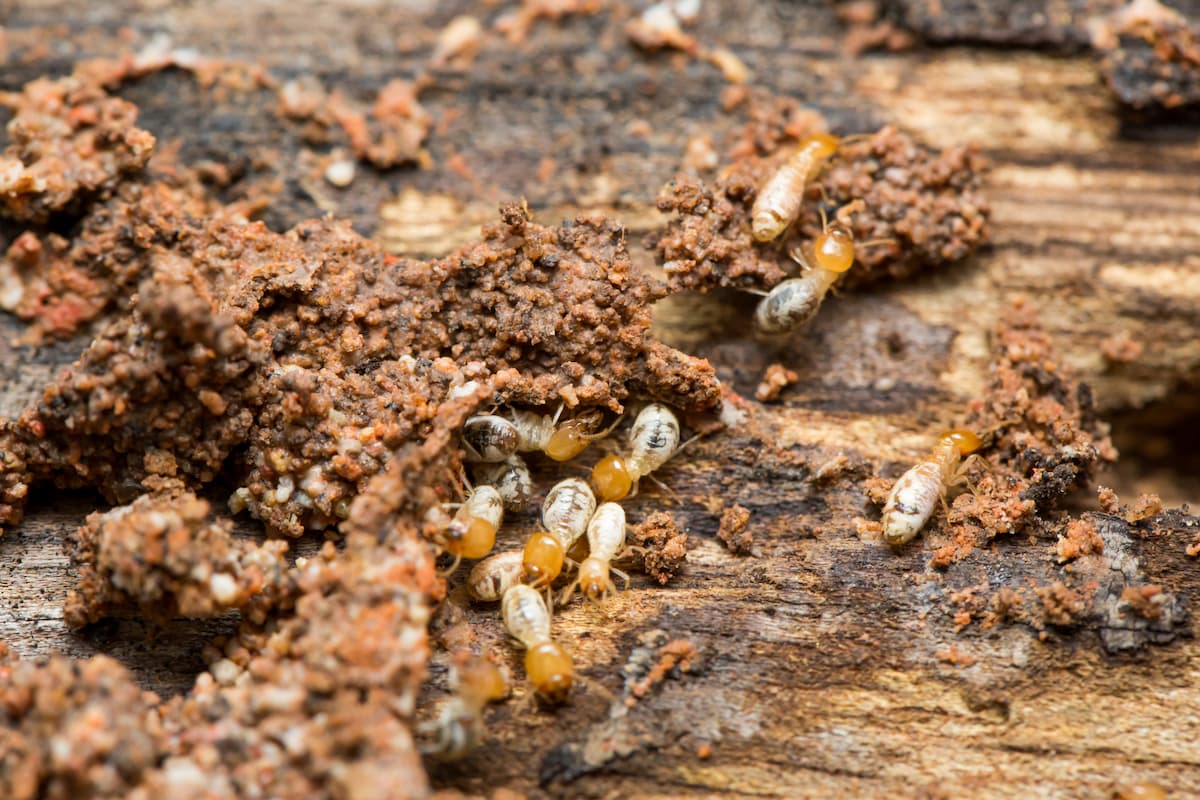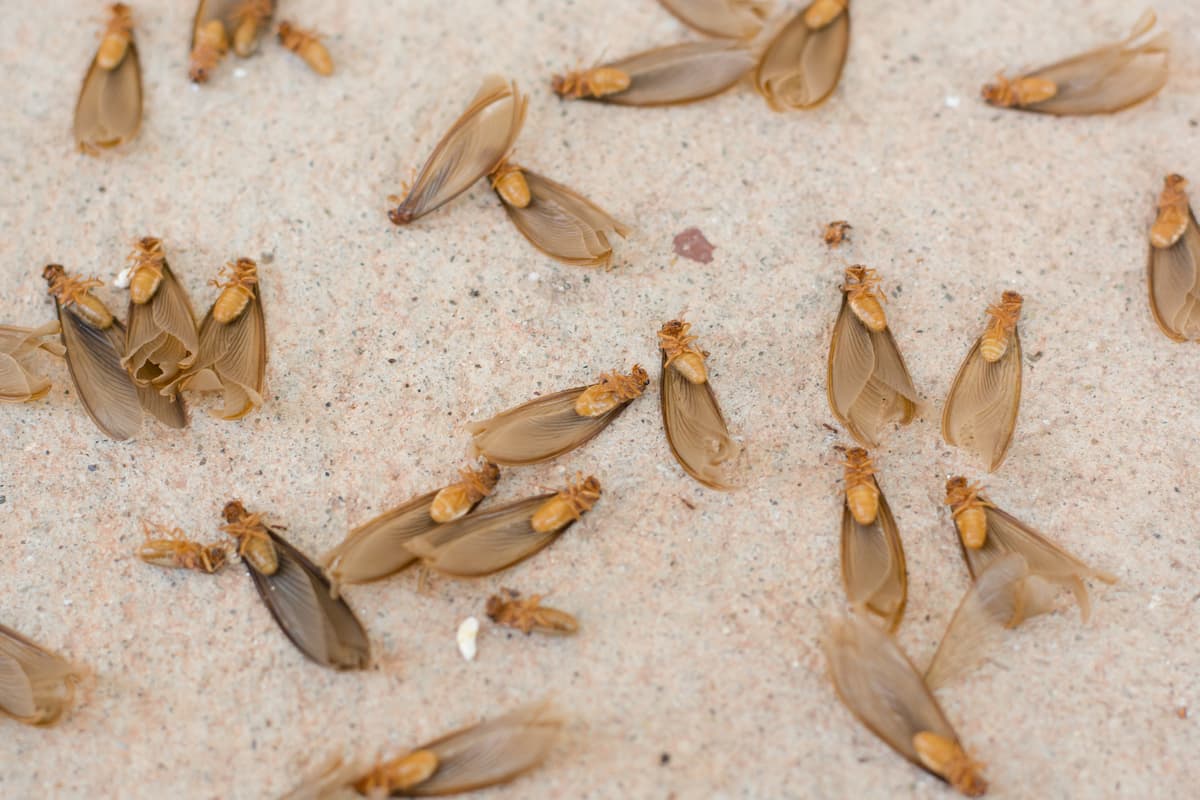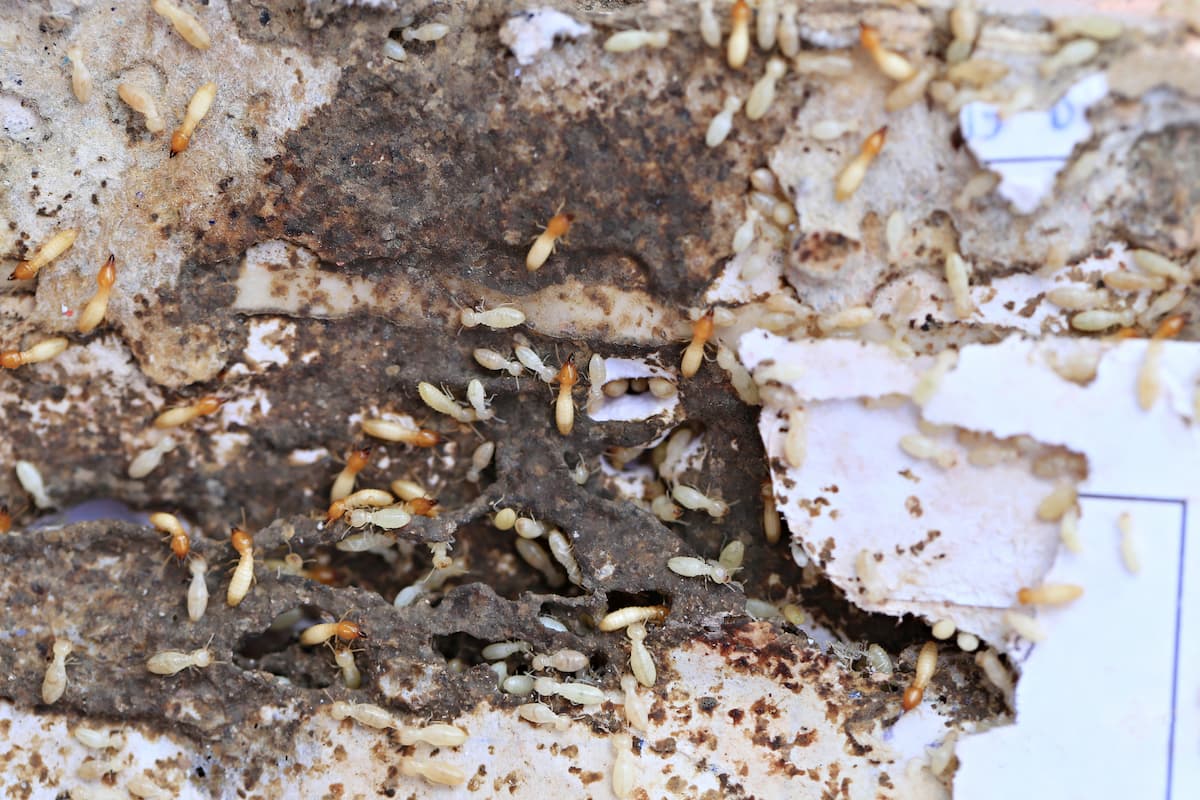How To Know If Termites Are Gone After Treatment?
Termites are pesky creatures that are hard to control.
Depending on the type of treatment, you can underestimate the size of the infestation and encounter the insects a few weeks later.
This situation is particularly likely with DIY solutions, highlighting the importance of professional exterminations.
The easiest way to know if termites are gone after treatment is if you don’t see them a month after the extermination. Droppings and wings are usually present after treatment, but they’re the remains of the old infestation and not signs of a new one.
Still, no solution keeps you termite-free for life, and you should take the necessary measures to keep the insects away for as long as possible.
Can Termites Come Back After Treatment?

Yes, termites can return after treatment.
Treatments last for about five years, and while the peace of mind is nice, slacking off can invite termites to return.
You’re also more prone to repeat infestations if you’ve previously had termites.
Unless the exterminator sets up barriers and takes precautions like treating your wood, the timeline can easily change.
The probability of termites returning is also the highest if you use DIY control methods.
Effective extermination requires knowledge of the type of termites and the size of the infestation. The former is easier for the average homeowner to figure out, but the latter is almost impossible.
Professional exterminations aim to identify the species of termite and the extent of the infestation.
Once your home has been treated professionally, it’s up to you to continue prevention and maintenance. This will give you a fighting chance of staying termite-proof for longer.
Why Do Termites Come Back After Treatment?
Termites return after treatment because of specific aspects in your home or ineffective extermination.
The number one reason termites infest a home is that there is plenty to eat and drink. For example, a house with too much moisture, exposed wood, and exposed mulch around the foundation is prime real estate for a termite colony.
Professional extermination can keep you termite-free for a few years, but to avoid a massive infestation, you must actively engage in preventative maintenance.
Some things you can do to keep yourself termite-free for longer include:
- Fixing the plumbing in your house to remove dampness
- Clearing still water in your garden
- Storing wood in a raised, secluded place
- Keeping mulch a few feet away from your house
- Removing decomposing vegetation
- Using termite-resistant mulch.
The other cause of returning termites is the wrong termite treatment, in which case they’re not really “returning” but are the offspring of the remaining colony members.
While it’s rare for professional pest control companies to administer the wrong termite treatment, if they do, they’re inexperienced, lack the necessary qualifications, acted with neglect, or made an honest (but expensive) mistake.
Whatever the reason, call the company that handled the extermination and request an inspection (or a refund!).
How Long Does It Take for Termites to Die Post-Treatment?

Two main factors determine how long it takes to get rid of termites post-treatment:
- The size of the infestation
- The size of your home.
A large infestation takes an extended period of time to die off completely. The insects also take longer to die if you live in a two-story house as opposed to an apartment.
Still, it doesn’t take more than a few days to get rid of an entire infestation.
You might encounter termite swarms post-treatment due to how termiticides work. The poisons don’t kill the insects immediately, allowing them to keep producing alates (reproductive termites) before death.
Alates can survive harsher temperatures than their counterparts, but they aren’t a cause for concern as their priority is to start a new colony elsewhere.
They will lose their wings and die if they can’t escape your house.
Contact the pest control company if you still see live termites a few months after the treatment.
How Do You Know If You Have Termites After Treatment?
First, ensure at least one month has passed before checking if you have termites post-treatment. That’s enough time for the treatment to penetrate the house and eliminate the existing colonies.
Afterward, the most important sign is the most apparent – live termites.
There are four types of termites in a colony.
Worker termites are the queen’s servants. They find food, excavate the nest, and make tunnels. They’re light cream in color.
Soldier termites are the security guards, protecting the colony from intruders. Soldier termites have large heads and are pale red, light brown, or white.
Alates or swarming termites are more mature. Their primary concern is to find a mate, not eat your wood. They’re easier to detect as they have wings.
The queen is the giant termite. She’s easily noticeable but is the hardest to find. As she grows older, her egg-laying capacity increases, laying up to a thousand eggs daily.
Immediately call the exterminator if you see any of these termites after a month or two.
Also, confirm that you’re dealing with termites in the first place. Carpenter ants are so similar to their fellow wood lovers that many people confuse the two.
Three primary differences are:
- Carpenter ants have thin waists, while termites have rectangular bodies.
- Carpenter ants have more durable wings, while termite wings fall off easily.
- Carpenter ants have elbowed antennae, while termites have straight antennae.
Carpenter ants visit homes primarily because of the cellulose in the wood. If you have a carpenter ant infestation after eliminating termites, take a closer look at your wooden structures.
Do Termite Droppings Post-Treatment Signify An Infestation?

Like the discarded wings of swarming termites, termite droppings a few days after treatment aren’t a cause for concern.
They’re the excretions of the last colony, and you should track and clean them.
You’ll see even more droppings in your wood structures when repairing them, so don’t call the exterminator just yet.
If the waste is in a pile (not scattered) or you keep seeing droppings months after the extermination, you may have to call the exterminator back in.
How Soon Do Termites Come Back After Treatment?
Depending on the treatment, it could be years before termites come back.
Fumigation is the most effective control method. You can keep termites away for a long time after, especially if you pair fumigation with preventative maintenance and routine inspections.
DIY methods are less predictable, as finding the root of the infestation isn’t as easy.
If you find it (whether by accident or through effective planning), you can keep termites away for a long while. However, it won’t be nearly as long as with effective fumigation.
The only time termites come back weeks after fumigation is if the nest is outside your house and the chemicals didn’t get that far.
Still, a new infestation is hard to detect on your own, especially if the colony isn’t at its maximum population.
Annual inspections are vital as an experienced operator can better detect new visitors.
Conclusion
Seeing termite residue after treatment isn’t a cause for concern – it’s simply a mark of the eliminated colony.
You should also not panic if you see winged termites a few days after the elimination. Those are the reproductive alates, and they eventually die if they fail to escape.
If you notice common signs of termites months after treatment, it may indicate reinfestation or a failed treatment. In this case, call the exterminator to come and inspect your home.
If you think a termite infestation is extensive (and to avoid significant and costly damage to your home), hire a professional – DIY control methods can only go so far and protect you for so long.
Table of Contents
- Can Termites Come Back After Treatment?
- Why Do Termites Come Back After Treatment?
- How Long Does It Take for Termites to Die Post-Treatment?
- How Do You Know If You Have Termites After Treatment?
- Do Termite Droppings Post-Treatment Signify An Infestation?
- How Soon Do Termites Come Back After Treatment?
- Conclusion
